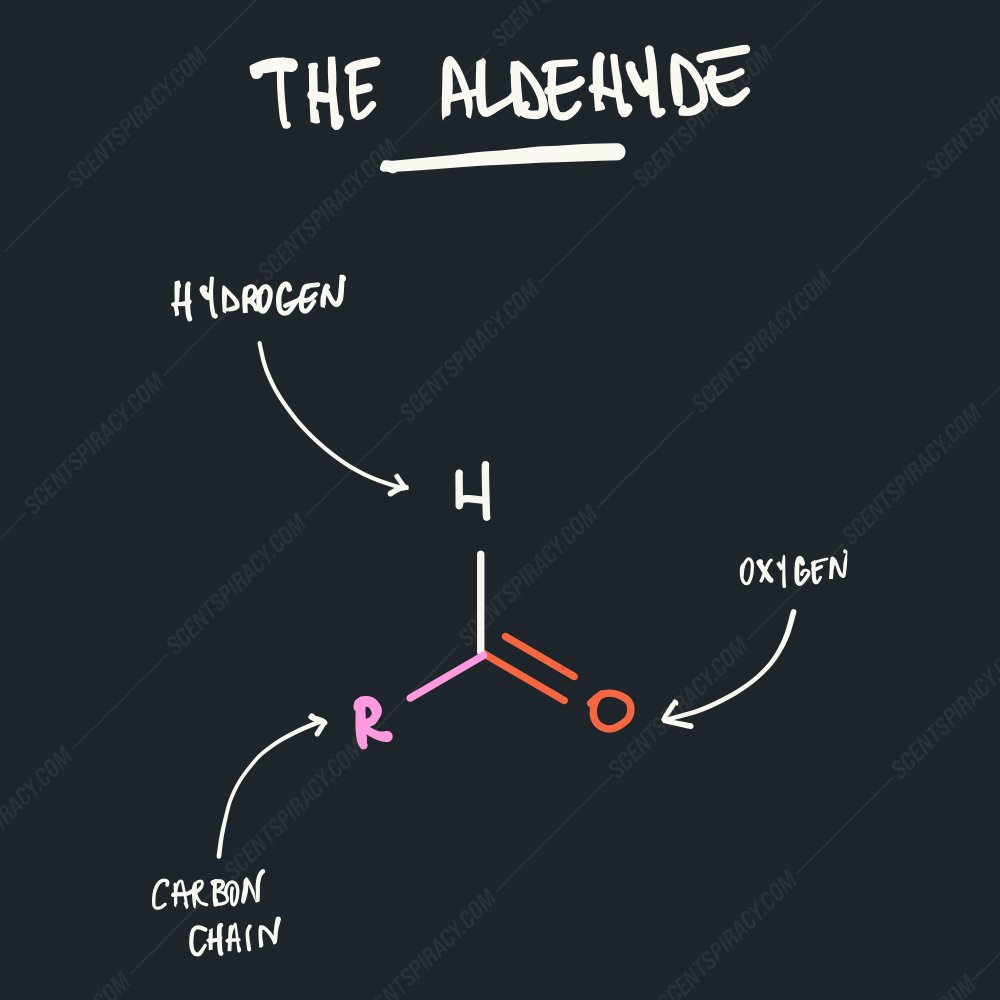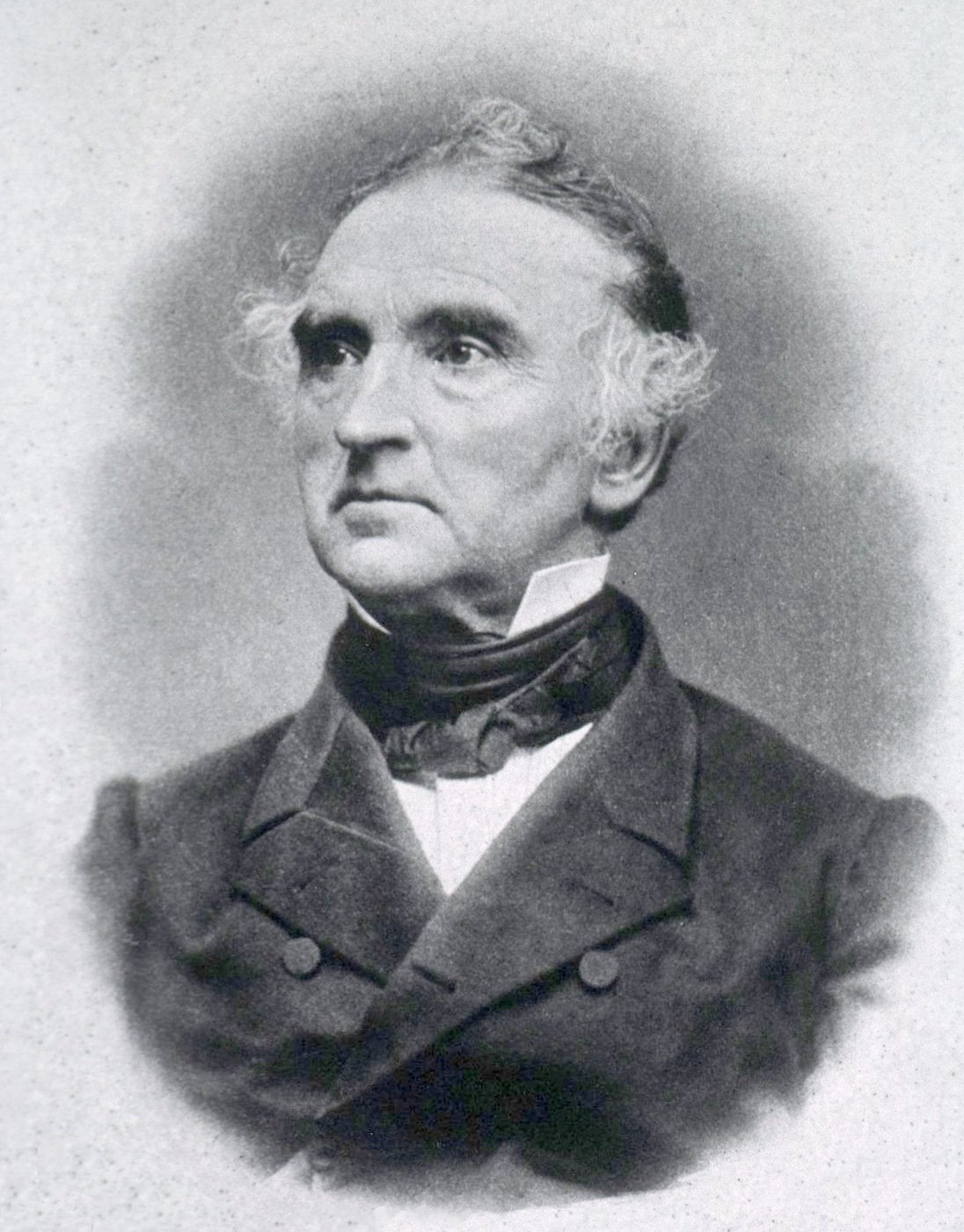Aldehydes in perfumery
The role of aldehydes in perfumery
What is an aldehyde:
An Aldehyde is a double bond between an oxygen atom and a carbon atom.
The discovery
Aldehydes were discovered in the early 19th century, more precisely in 1835 by the German chemist, (baron) Justus von Liebig, who first isolated these molecules.
Known for his work in organic chemistry, his discoveries greatly influenced industrial agriculture and modern perfumery.
The first synthesis
In 1903, chemist George Auguste Darzens managed to synthesize aldehydes to reproduce them.
But its process is still uncertain and the quality and quantity of the molecules are not entirely satisfactory.
A new and much more reliable process was developed about fifteen years later thanks to new technological discoveries.
Industrial production of aldehydes began in 1910.
The use of aldehydes in perfumery from 1900 to the present
In their early days, aldehydes were rarely used. And when they were, only with great moderation and with the simple purpose of stabilizing formulas. It was only with the genius and audacity of some perfumers that these molecules became known due to their unusual smell.
This is the case of Robert Bienaimé who created the Quelques fleurs fragrance in 1912, for the Houbigant house. This nose then offered an important place for synthetic molecules such as hydroxycitronellal that evokes the lily of the valley and aldehyde C12.
This decidedly modern fragrance for its time will influence other perfumers and in particular Ernest Beaux, the nose of the famous Gabrielle Chanel (Maison Chanel).
For her, he created the iconic No. 5 in 1921. For the first time in composition, aldehydes are widely perceptible. They give the fragrance a powerful trail, an artificial, “metallic” look.
Quickly, aldehydes were used in many great perfumes, until the 1990s. But after so many years at the top, the much-loved molecules end up getting tired. Faced with new gourmand fragrances, they are abandoned by noses that favor more reassuring and regressive facets.
The smells of aldehydes
In perfumery, aldehydes are considered as an olfactory facet that will be combined with the ingredients of a composition to form a fragrance.
I (Fulvio Ciccolo) prefer to consider them "technical" ingredients. They have a very specific function and are used according to a specific agreement or complex.
Aldehydes are divided into two main categories: aromatic aldehydes and aliphatic aldehydes.
Aliphatic aldehydes are classified based on the number of carbon atoms they contain. We will thus find aldehydes C6, C7, and C8 up to C12. Each of them will smell different. Let’s see them below.
Aldehyde c6 — Fat, ebaceous green. Rancid butter. It easily oxidizes in contact with air in Caproic acid, responsible for the smell of rancid.
Aldehyde c7 — Oily, fat, rancid, fermented fruit.
Aldehyde c8 — Powerful, Scratchy, orange-like fat. It oxidizes to Caprylic Acid within 24 hours.
Aldehyde c9 — Fat, floral and waxy. In floral and rosy dilution, fresh as neroli.
Aldehyde c10 — Penetrating, sweet and waxy. Evident note of orange peel.
Aldehyde c11 (saturated) — Pleasant waxy floral, contains a fruity note of moderate tenacity.
Aldehyde c11 (unsaturated) — Powerful, slightly waxy, pink citrus smell. The smell could be classified as a standard of the term “aldeidic.”
Aldehyde c12 Lauric — Sweet, waxy-herbetic smell, very fresh and clean-floral with a faint balsamic undertone. The smell is often referred to as the “smell of fresh laundry,” but it’s only pleasant in extreme dilutions. The concentrated material has a rather fatty-concerous smell.
Aldehyde c12 MNA —Sapy, floral, metallic, clean smell, pine note.
Sources and Information:
Justus von Liebig Image By Unknown author - http://ihm.nlm.nih.gov/images/B17480, Public Domain, https://commons.wikimedia.org/w/index.php?curid=19141954
George Auguste Darzens Image Di GGENDREAU - Opera propria, CC BY-SA 3.0, https://commons.wikimedia.org/w/index.php?curid=24449935
Robert Bienaimé image By Osmothèque - Own work, CC BY-SA 3.0, https://commons.wikimedia.org/w/index.php?curid=29760877
ALDEHYDES: HISTORY OF A SCENTED REVOLUTION https://www.carrementbelle.com/blog/en/2021/08/11/aldehydes-perfumery/
https://iberchem.com/ingredient-aldehydes/https://iberchem.com/ingredient-aldehydes/








